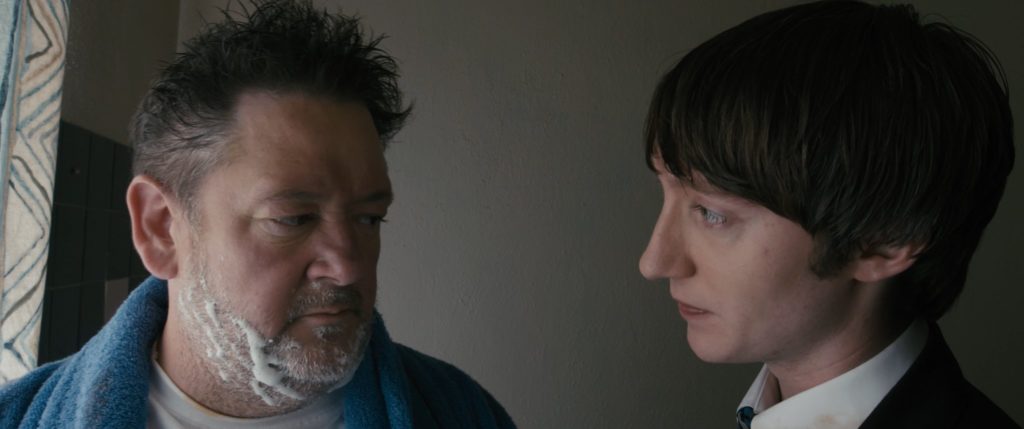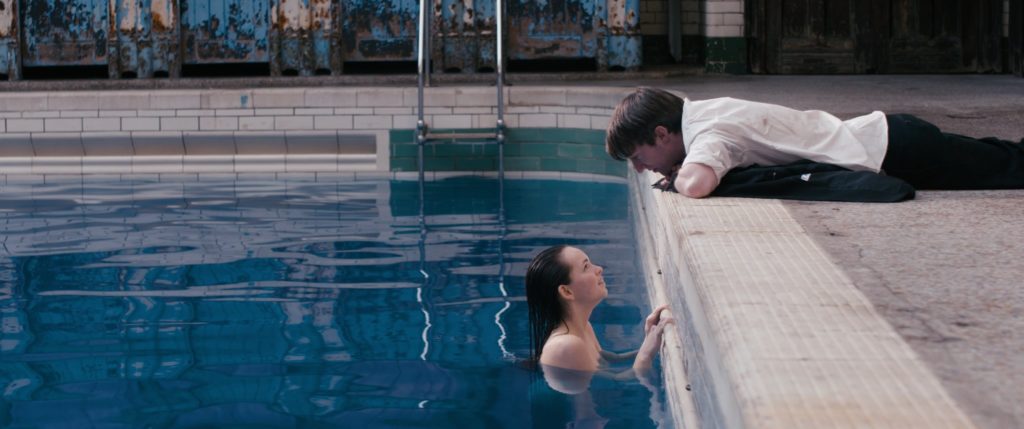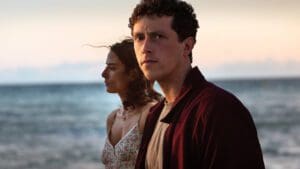Summary
An ambitious adaptation of Caroline Smailes’ urban fantasy novel for teenagers, this film tackles bullying, troubled families and romance with an unusually gritty tone for its audience.
At the International Coventry Film Festival recently, I had the privilege to see a pre-release screening of The Drowning of Arthur Braxton. It always feels like a privilege to see films which don’t have official release dates yet, and even more so when there are still elements of production (and possibly even fine tuning of plot) to be finished off yet, as it was in this case. It was a fascinating watch, full of contrasts; though some of them sit a little uncomfortably together, and some much more successful.
The Drowning of Arthur Braxton is adapted from the young adult novel by Caroline Smailes and is a coming-of-age story about the teenage titular Arthur (James Tarpey). He’s the sort of young man who sits on the edge of things at school and finds himself picked on for random reasons or none. At times, it turns into severe bullying (rather graphic for a film aimed at teenagers), and the teachers either do not notice, do not take it seriously, or do not believe him. Arthur gets no support from home either, a troubling environment in its own right, and the film opens with him feeling like it’s all got too much, and considering walking into the sea. Then he hears singing from “the Oracle”, an Edwardian swimming bath which is fenced off to be knocked down, and things take a new direction for him.
I’m not going to outline the whole story, but a few characters instead. The young woman singing is Delphina, a water nymph, believe it or not; and there are a couple of other not-so-worldly characters living with her. Tommy and his mate Cliff are the bullies, made more believable by being portrayed by real teenagers. There are two very contrasting teachers: Miss Jarvis, who provides refuge for Arthur at lunchtimes; and Mr. Worrell, who treats all his students equally (to detention). And then there’s Arthur senior, struggling with his health, grief, and drink.

Here’s the first of the contrasts I mentioned: some of the actors are incredibly good, while others are rather poor. The two who stand out as best are Tarpey playing Arthur himself and Johnny Vegas as his father. Tarpey plays Arthur as a truly believable young outcast, who neither knows how to fit in nor why he should bother. He is kind but stepped on at every turn and Tarpey plays his hurt like he’s known it. Vegas plays Arthur senior like a natural, absolutely remarkable, giving out bitterness and despair like he has a surplus. Although he wasn’t in a huge number of scenes, the relationship between the two is beautifully written and the actors fully do it justice: they are both dealing with the loss of young Arthur’s mother, as well as other personal issues, but have no grasp of how to communicate effectively together. Vegas was a real find for this film, a perfect foil for the moronic school crowd, and someone young Arthur would love and support no matter what. And everything he thought and felt was visible, in his body as well as his face.
So it’s a shame to say that the other roles were not played so well by a long way. I’m not sure how much of it was the acting or the writing or a combination, but the three playing the water spirits were simply poor, and the two teachers belonged in Grange Hill. There’s a pretty good pedigree amongst all the cast, including High Rise and Game of Thrones; so perhaps it’s simply that better attention was paid to the character writing in the case of the Braxton blokes than the others.
The other major contrast in The Drowning of Arthur Braxton is between the fantastical scenes and the more real scenes. The school scenes and the bullying particularly were harshly realistic, with Arthur hiding from the others in the rain at one point, and being beaten bloody at another. Realism is to be found in his home as well, of course, in the poor treatment from his father. But when he enters the Oracle and meets a young woman who lives in the water, and another who is older than she looks, realism goes out the window; indeed it’s not obvious at all at times whether Arthur is imagining all he sees there or if something paranormal is going on. This Neverwhere-style dichotomy is clearly taken from the book, but I struggled with it now and then: are we meant to believe it all, or not? It might have been a little easier to accept if the mystical elements were integral to the whole world of The Drowning… but maybe that was just me.
Actually, the story would have been perfectly solid without any of the paranormal bits at all: if it had purely been about Arthur’s school life, his family, the realisation that schools can do little about bullies (especially when off the school grounds) and that the only way to resolve relationships is to put effort into understanding each other… well, there is more than enough plot there, and it would have given more room to well-rounded characters. I don’t see that there was any need for water nymphs, goddesses, healing well water, etc. at all. Nevertheless, it was there in the book.
The Drowning of Arthur Braxton is directed by Luke Cutforth, a young, first-time director, who may be familiar to you from YouTube. Cutforth adapted it from Smailes’ novel with Hassan Otsmane-Elhaou; and from what I gather, it can’t have been easy. He was determined to be true to the book, yet make a film which was accessible to a teen audience as well; so kept in as much as possible, while removing aspects which may have been too adult on screen. I don’t know how well the end result will suit the teen audience though: the film is slow and studied at times, and pretty serious throughout; perhaps the best audience will be those who have already fallen for the book.
I must say though that the one aspect of The Drowning of Arthur Braxton which made a mark as much as Johnny Vegas did was the set used for the old swimming baths. Victoria Baths, in Chorlton-on-Medlock, Manchester is a listed building, currently undergoing restoration, so is not going to be pulled down as the building in the film was planned to be. Luke Cutforth was very lucky to be permitted to use this site, and from what I understand, it’s the place Smailes had in mind when she wrote the book too.
I do hope The Drowning of Arthur Braxton finds a suitable distributor and – in the end – an appreciative audience. It is a fascinating project and shows plenty of promise in the team, who have more films in the pipeline.



